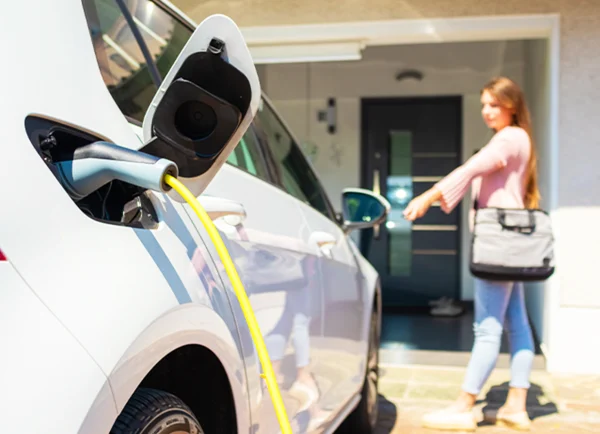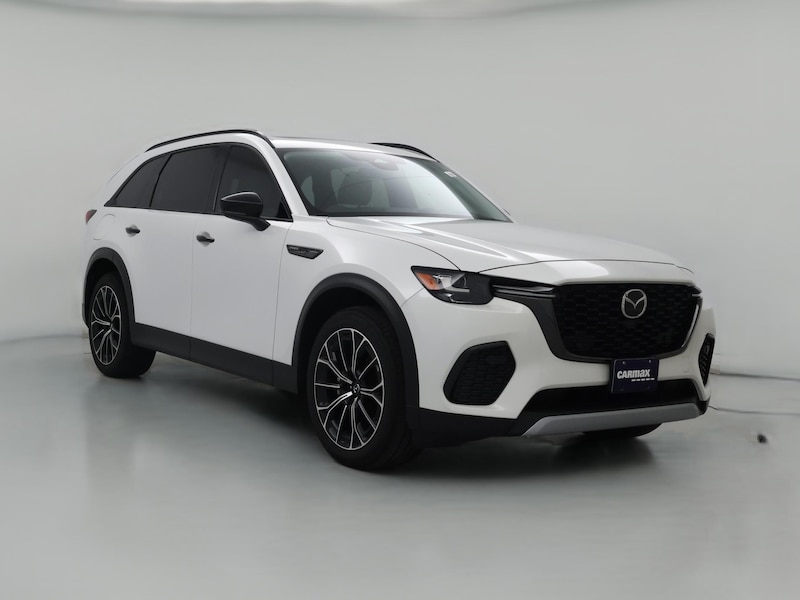
Plug-in hybrids
Full EVs may get all the news, but plug-in hybrids (or PHEVs) offer a variety of benefits.
Available as sedans, crossover/SUVs, minivan, and wagons, PHEVs can operate on only the engine, only the battery, or both together for optimal efficiency and/or added performance.
Best plug-in hybrids
Check out the 9 most popular used plug-in hybrids with CarMax customers.


1. Toyota Prius Prime Hybrid
CarMax owner rating
Pros
Eye-catching exterior styling
Impressive power, acceleration, and handling
Supremely comfortable ride
Cons
Gas engine can be noisy
Lackluster cargo space
Tight rear headroom

2. Chevrolet Volt
CarMax owner rating
Pros
Impressive electric range
Advanced tech features
Maneuverability
Cons
Limited interior space
Plastic interior trim
Parking challenges due to limited visibility

3. Honda Clarity Plug in Hybrid
CarMax owner rating
Pros
Quick acceleration
Long electric driving range
The rear seats fold down
Cons
Outdated touchscreen graphics
Only two trim options
Suspension lacking on bumpy roads
Research plug-in hybrid vehicles
FAQs about plug-in hybrids
If you typically drive 15-40 miles per day, you should consider a PHEV as they provide you the experience of driving an EV but with the fallback of a gasoline engine. Most PHEVs can fully recharge from a standard 120V wall-socket in 6-8 hours, so if you plug-in at home each night you will have a full charge by morning.
Helpful Tip: Even if you can get away with electric-only use, it is wise to use the gasoline engine from time to time to keep it operating smoothly. Plus, the gasoline engine can provide additional heat to warm the car in colder climates.
With the proper cable (typically included with the car), you can plug into a common 120V power outlet and get 3-5 miles of range per hour charged.
If you want a faster charge you can explore upgrading to a 240V system, which typically provides 10-20 miles of range per hour charged. For any modifications to your home’s power system, consult an electrician to add 240V outlets, installed charging boxes, and ensure your home can support the proper amperage.
You can charge your PHEV at home or on the road with a few options:
Standard home wall outlet (known as Level 1 charging): a common 120V power outlet provides about 3-5 miles of range per hour charged. A good practice of many PHEV owners is to charge overnight, where you can achieve a 30-mile range in 6-8 hours, allowing you to start your day with a full battery.
Upgraded home wall outlet + charging box (known as Level 2 charging): a conventional 240V power outlet—like one your washing machine uses—provides power at a faster 10-20 miles of range per hour charged. You will need a charging regulator box to protect the vehicle against things like power surges, which can cost $500-$1000+ before installation. For any modifications to your home’s power system, consult an electrician to add 240V outlets and ensure your home can support the proper amperage.
Public chargers (also known as Level 2 charging): public chargers can also be used on PHEVs, though you should evaluate if the cost is justified—because the price of charging at public chargers varies, and it may be cheaper to simply use the gasoline already in your car.
Most PHEVs do not support direct current fast charging (also known as Level 3 charging); that would be like trying to fill a small bucket with a fire hose.
PHEVs have low relative EV-only range because most drivers only drive 10-20 miles per day. A plug-in hybrid allows owners to handle daily tasks like commuting or errands using just the battery, but allows for long driving and road trips without concern for charging stations.
You do not necessarily have to plug-in a PHEV*, though it provides the most efficient charging source. The battery can recharge by drawing power from the engine or leveraging regenerative braking.
* Some PHEVs, like the Audi Q5 Plug-in Hybrid, do require plugging in to fully recharge their battery.
All manufacturers call them plug-in hybrids, though some manufacturers add additional branding to their models:
– Ford uses ‘Energi’, such as the Ford Fusion Energi
– Jeep uses ‘4xe’, like the Jeep Wrangler 4xe
– Toyota uses ‘Prime’, like the Toyota Prius Prime
– Volvo uses ‘Recharge’*, such as the Volvo S60 Recharge
* Prior to 2020, Volvo labeled their PHEVs as ‘T8 twin-charge’ models, so you may see different names used depending on year; also, the Volvo XC40 Recharge is a fully-electric vehicle, not a plug-in hybrid, so that one is an exception.
The three most common charging plugs that have been offered on BEVs and PHEVs are as follows:
CCS / J1772 – The CSS / J1772 plug has been the most common in North America and had been the market standard until 2023. It has two variations, the standard J1772 plug with 5 pins that supports Level 1 and 2 charging, or the enhanced CCS (Combined Charging System) plug that adds 2 pins (for 7 total) and supports DC fast charging.
NACS – While used only by Tesla until 2023, most automakers have announced they’ll switch future models sold in the US to use NACS (North American Charging Standard). The NACS plug is smaller than the CCS and, for some, easier to handle.
CHAdeMO – The “Chad Mo” plug is a Japanese-market standard and was used on early BEVs/PHEVs like the Nissan Leaf and Mitsubishi Outlander PHEV, though both automakers have said they'll move to other standards in North America.
The CCS, NACS, and CHAdeMO all support DC fast charging; however, when using a public fast charger you’ll need to find one that has the appropriate plug for your vehicle.
Energy must be used to get any vehicle up to speed, and typically that energy comes from either a fuel source or battery pack in your car.
With a traditional braking system, pushing your foot on the pedal triggers the brake components to compress together, creating resistance to slow your vehicle's wheels. Any energy you had used to get up to speed is then lost as heat.
With a regenerative braking system, your wheels are connected to a motor that recaptures some of the energy used to get your vehicle up to speed, which is then converted back to stored power in the battery—hence the name 'regenerative'.
Most electric vehicles, including full EVs, HEVs, and PHEVs, feature both braking systems and allow you to select whether to use both or only regenerative braking. Because most regenerative braking systems kick in immediately after releasing your accelerator pedal (no need to apply the brake pedal) you can drive while using your traditional brakes significantly less often; this is commonly called one-pedal driving.
Understanding plug-in hybrids
Ready to find your plug-in hybrid?
Research other alternative fuel options
We hope you found this information helpful. This content is intended to inform and is not meant to provide legal, financial or investment advice. We make every effort to provide accurate information, but please verify before transacting and consider talking to a qualified professional about your unique circumstances.
Statements of fuel economy or EV range are based on EPA and other third-party estimates for vehicles when new. Fuel economy and EV range will degrade with time and vary based on age, driving conditions, vehicle history, and other conditions. See fueleconomy.gov for more info.
Editorial content contained on this page comes from Edmunds.com, Inc., a subsidiary of CarMax Enterprise Service, LLC, and information related to featured vehicles comes from third-party sources, including manufacturer information. Product and company names may be trademarks or registered trademarks of third-party entities. Use of them does not imply any affiliation with or endorsement by these entities. By clicking on any video links, you will be taken to a third-party site maintained by YouTube, Inc.


















